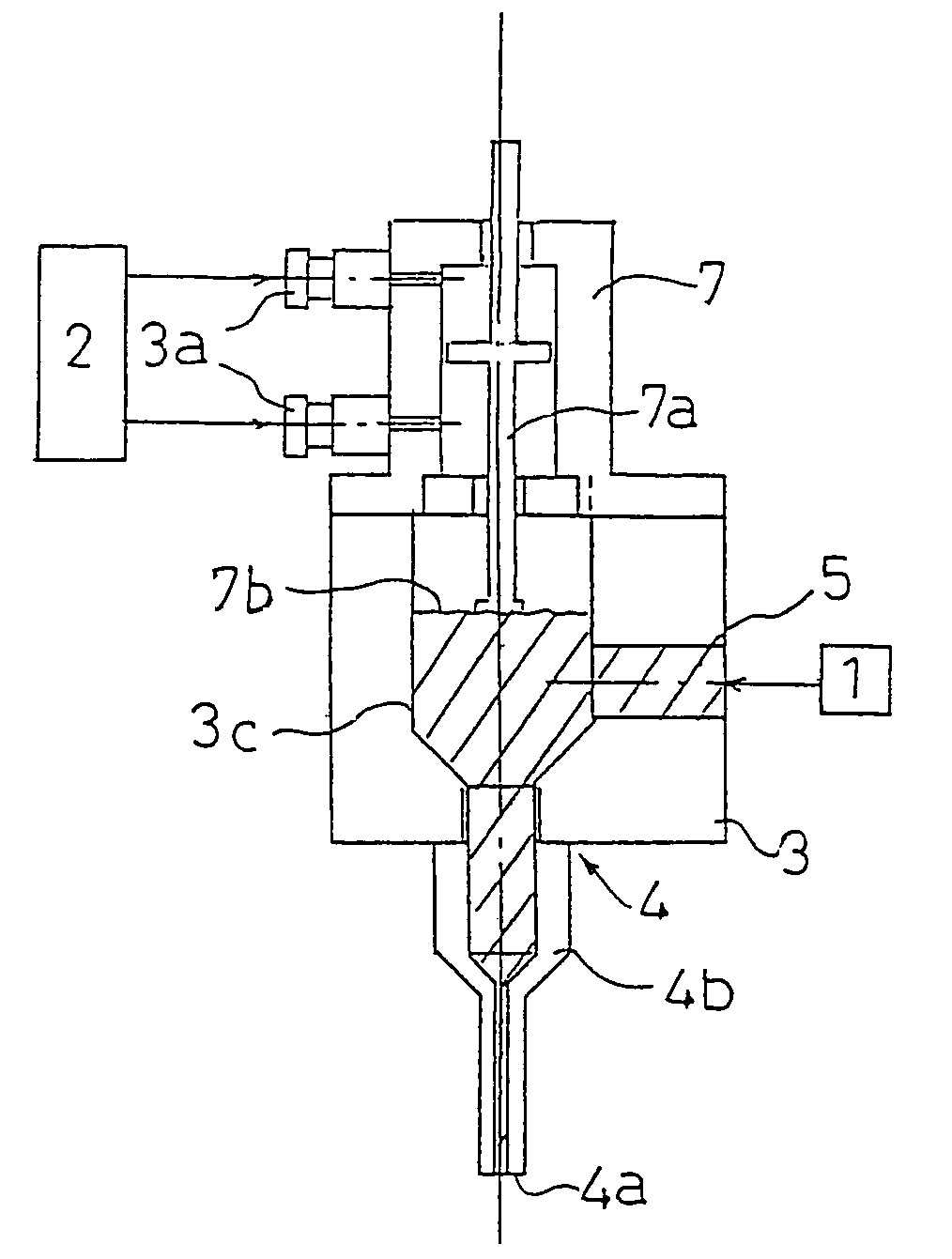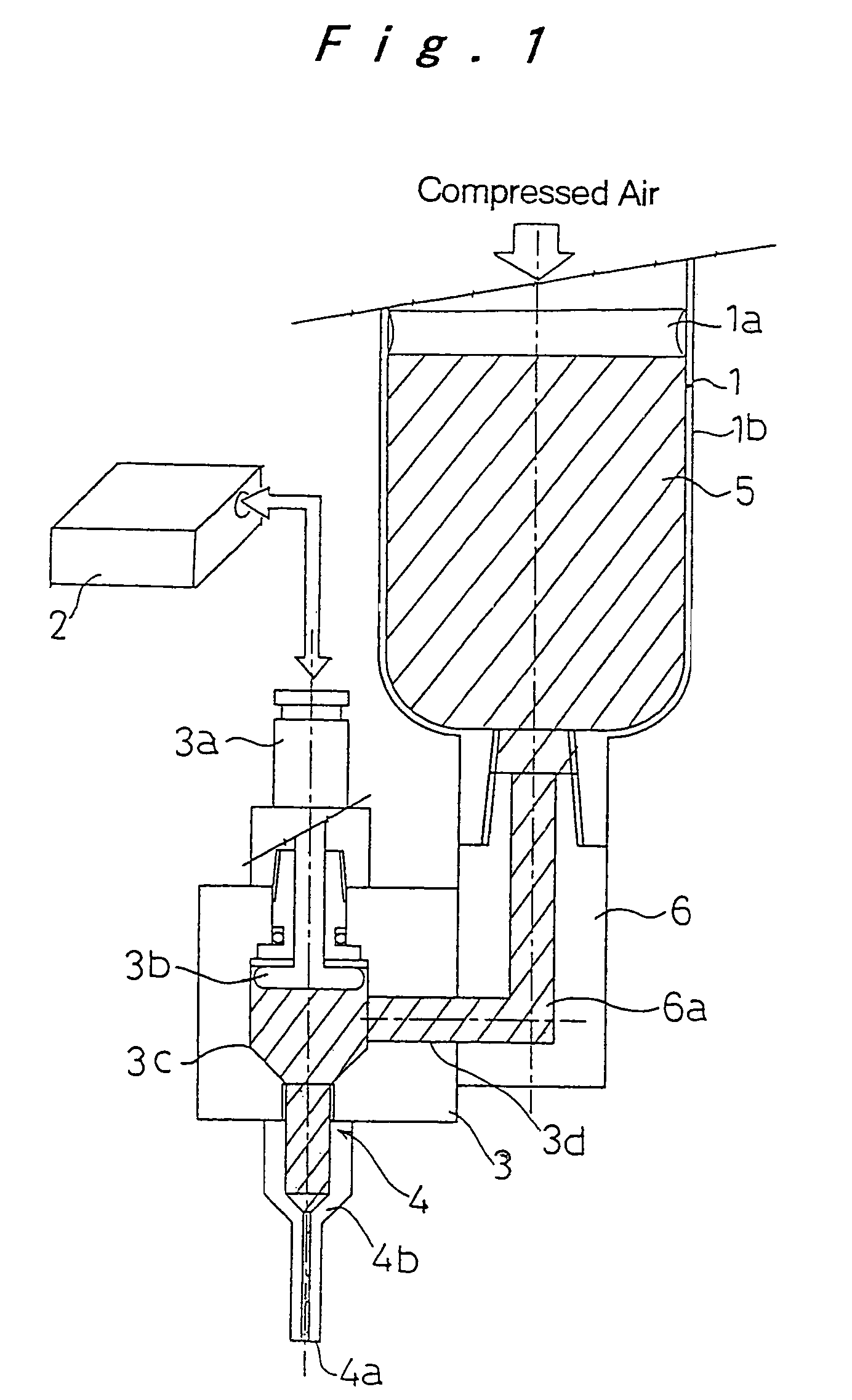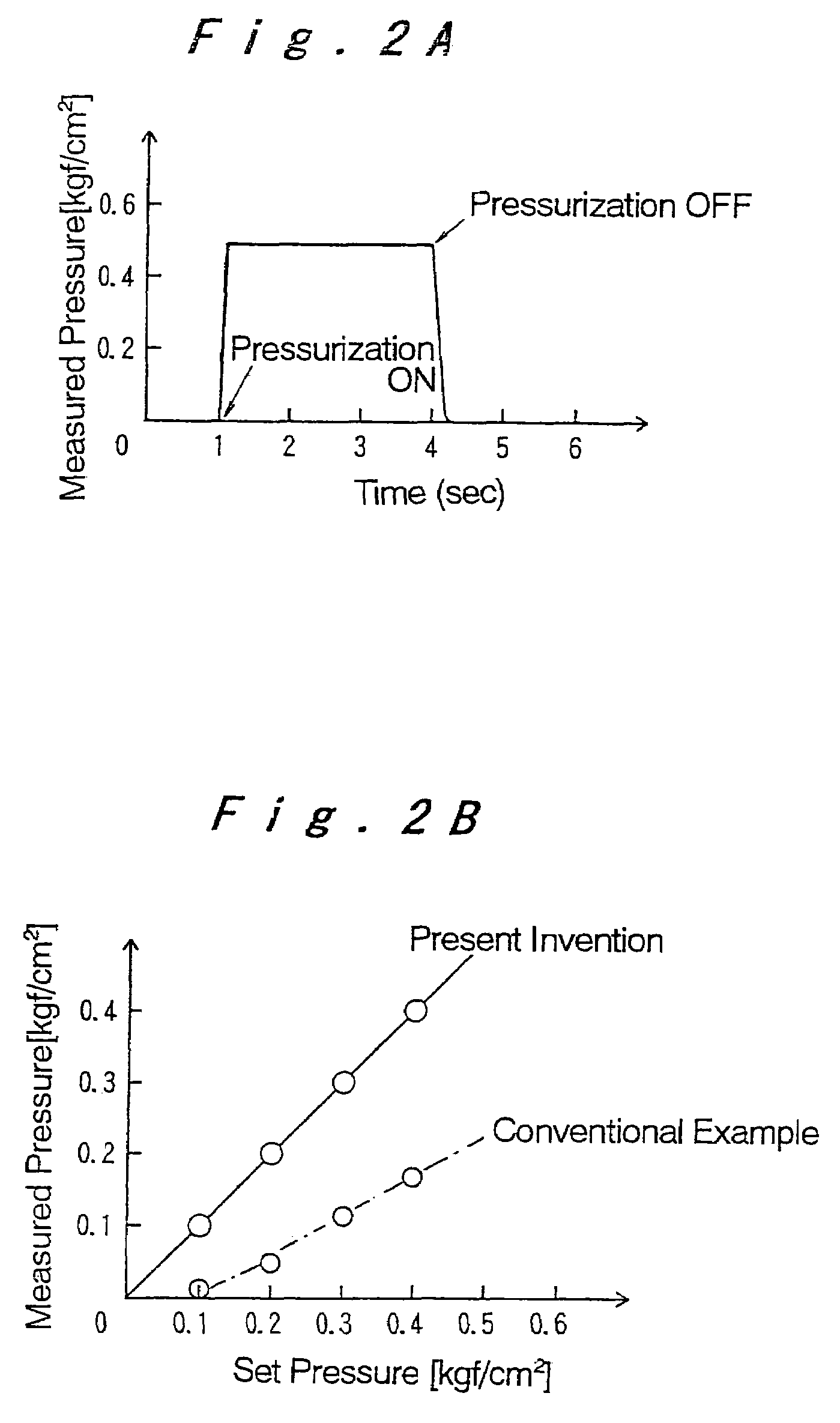Viscous material application apparatus
- Summary
- Abstract
- Description
- Claims
- Application Information
AI Technical Summary
Benefits of technology
Problems solved by technology
Method used
Image
Examples
first embodiment
[0059]A viscous material application apparatus shown in FIG. 1 comprises a material supply section 1, an air supply section 2, and an application unit 3 which forms a main body of the apparatus. The material supply section 1 contains a viscous material 5 such as an adhesive and cream solder stored inside a cylinder shaped storage tank 1b, and under the effect of compressed air used for material supply, a plunger 1a operates and pressurizes the viscous material 5, and transfers the viscous material under pressure so that the inside of a chamber (pressurized chamber) 3c of the application unit 3 is always full.
[0060]The application unit 3 and the material supply section 1 are connected by a joint 6, and by positioning a through aperture 6a provided in the joint 6 so that the through aperture 6a interconnects with a viscous material supply passage 3d provided horizontally in the side of the aforementioned chamber 3c, the viscous material 5 is supplied to the inside of the application ...
second embodiment
[0065] shown in FIG. 3, an air cylinder 7 which is connected to the air supply section 2 and a diaphragm 7b which is described below are used instead of the aforementioned discharge pressure regulating air pouch 3b. A piston 7a is provided in the air cylinder 7, and compressed air from the air supply section 2 which has been adjusted to a predetermined air pressure is supplied from an air port 3a, and accordingly the piston 7a moves up and down causing a deformation of the diaphragm 7b attached to the bottom end of the piston. This deformation of the diaphragm 7b causes an increase or a decrease in the capacity inside the chamber 3c, thereby applying pressure to, or releasing pressure from the viscous material 5. In addition to the device shown in the Figure, the diaphragm 7b may also utilize a bellows or the like.
[0066]According to a third embodiment shown in FIG. 4, an electric motor 8 known as a voice coil motor (VCM) is used for driving the aforementioned piston 7a to achieve re...
fourth embodiment
[0068]Specifically, as shown in FIG. 6A-FIG. 6E, in order to mount an electrical component, in a printing apparatus such as a planograph and mimeograph system (screen system) for printing a viscous material (printing paste) 31 onto a land pattern 33 of a circuit board 32, a squeegee 37 is used for filling an opening 35 in a screen 34 positioned on the circuit board 32 with the viscous material 31, but in the present embodiment, instead of the squeegee 37, a thin blade (inclined plate) 12 described below is used under the operation of the aforementioned discharge pressure regulating device. In other words, a viscous material application apparatus is used as the print head of a screen printing machine.
[0069]According to the fourth embodiment, in the printing step where the viscous material 31 is used to fill the opening 35 in the screen 34, by increasing or decreasing the capacity of the chamber 11a by utilizing the gas intake and exhausting actions associated with the air pouch 11b ...
PUM
 Login to View More
Login to View More Abstract
Description
Claims
Application Information
 Login to View More
Login to View More - R&D
- Intellectual Property
- Life Sciences
- Materials
- Tech Scout
- Unparalleled Data Quality
- Higher Quality Content
- 60% Fewer Hallucinations
Browse by: Latest US Patents, China's latest patents, Technical Efficacy Thesaurus, Application Domain, Technology Topic, Popular Technical Reports.
© 2025 PatSnap. All rights reserved.Legal|Privacy policy|Modern Slavery Act Transparency Statement|Sitemap|About US| Contact US: help@patsnap.com



